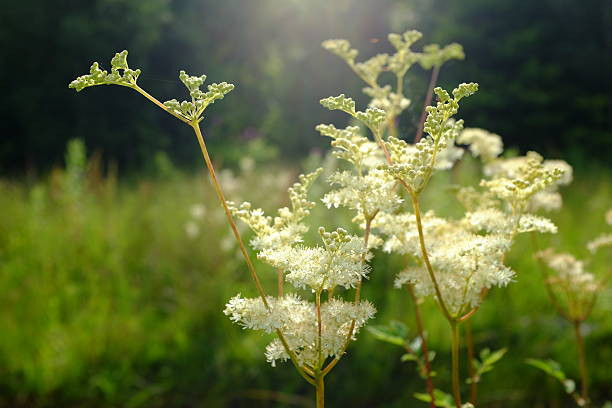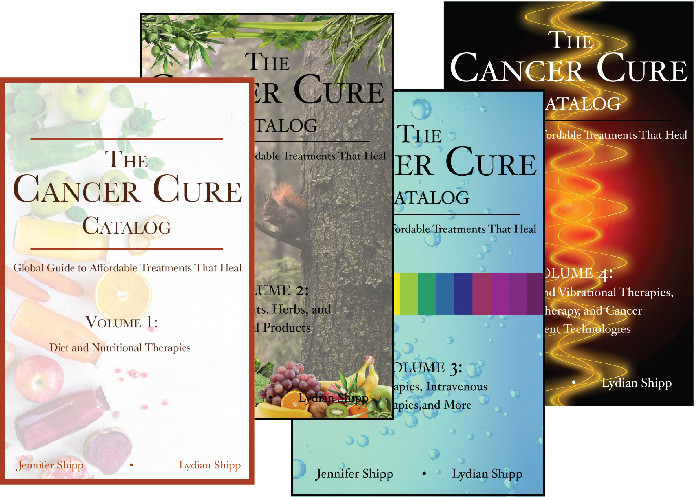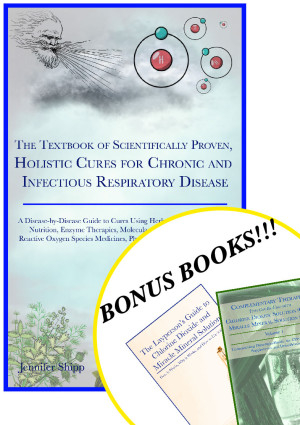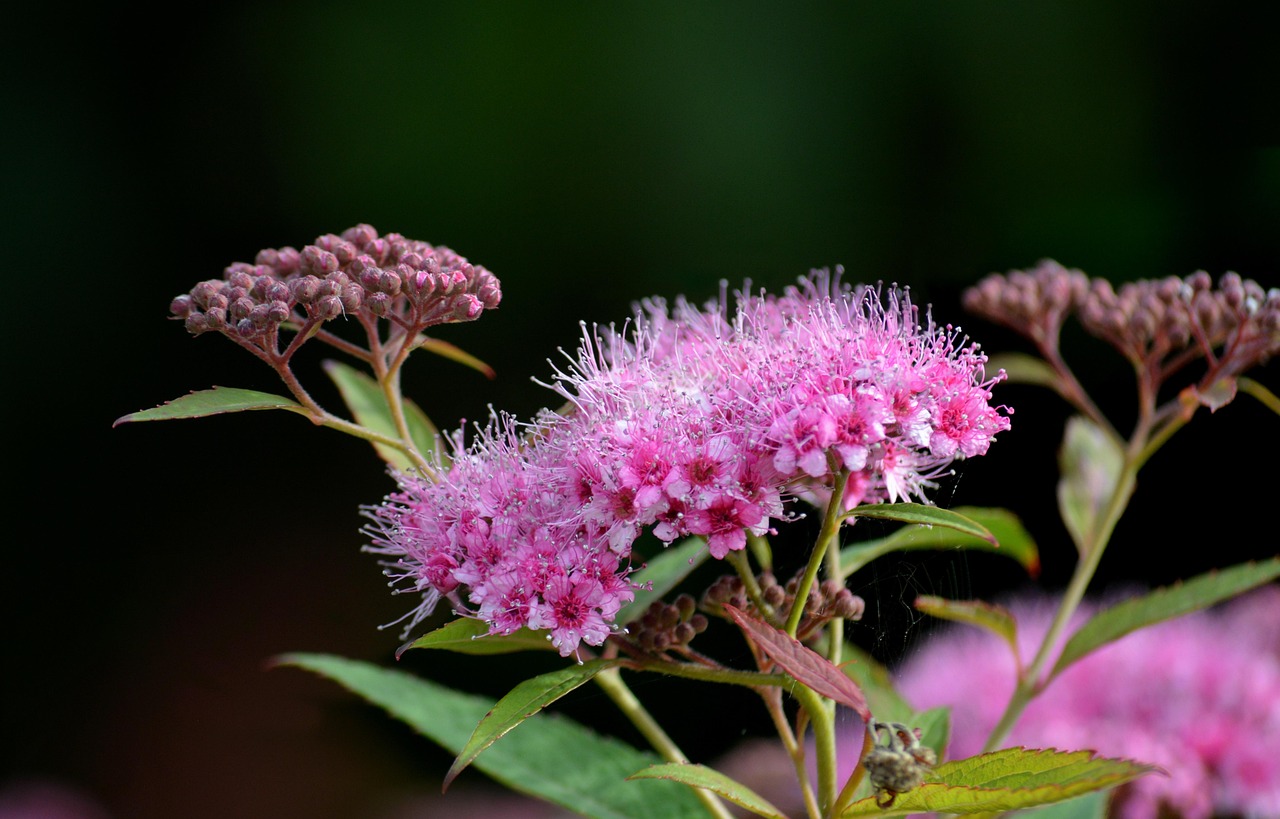 Meadowsweet: A Natural, Therapeutic Aspirin Alternative
Meadowsweet: A Natural, Therapeutic Aspirin Alternative
Filipendula ulmaria, an herb commonly known as meadowsweet (or by one of its other names, including bridewort, meadsweet, Lady/Queen of the Meadow, or dolloff), is an herbal medicine with a long history of use in Europe and west Asia. Salicylic acid was first isolated from meadowsweet’s natural pain-relieving compounds, and was later transformed into the well-known acetylsalicylic acid sold over-the-counter today as aspirin (whose name actually comes from meadowsweet’s old Latin name, Spirea ulmaria). While meadowsweet’s natural medicinal compounds contributed to the development of pharmaceutical aspirin, these two medicines act differently in the body. For example, whereas aspirin must be used with caution to avoid developing peptic ulcers, meadowsweet actually works to treat peptic ulcers while simultaneously relieving pain. Also, meadowsweet can be used safely to treat certain children’s conditions (like diarrhea), but aspirin, in contrast, cannot be given to children safely.
Some of the medicinal uses of meadowsweet include:
- Digestive system disorders (discussed more below)
- Women’s health problems
- Cervicitis
- Vaginitis
- Leukorrhea
- Cervical dysplasia
- Urinary tract conditions
- Cystitis
- Dysuria
- Suppressed urination
- Urinary stones
- Kidney disease
- Pyelitis
- Nephritis
- Bacterial and viral infections
- Staphylococcus aureus
- Rabies
- Scarlet fever (wound treatment)
- Common cold
- Influenza
- Listeria monocytogenes
- Proteus vulgaris
- Klebsiella pneumoniae
- Echerichia coli
- Streptococcus pyogenes
- Shigella flexneri
- Salmonella enteritidis
- Skin problems
- Wounds (applied externally, meadowsweet is antiseptic)
- Acne
- Skin boils
- Cellulitis
- Erysipelas
- Liver diseases
- Candida spp. Infection (meadowsweet has been shown to be effective in treating C. albicans, C. glabrata, C. parapsilosis, and C. tropicalis)
- Chronic and acute pain
- Hemorrhoids
- Inflammatory conditions
- Arthritis
- Gout
- Rheumatism
- Fever
- Edema
- Malaria
- Burning, itchy eyes (when used as a distillate)
- Snake bite
- Nervousness
- Ear pain (topical application)
- Muscle spasms
- Bile tract diseases
- Chills
- Cancer
- Cachexia / Weakness and weight loss caused by chronic illness (administered externally as a bath for this purpose in Romanian folk medicine)
The medicinal actions of Filipendula ulmaria include:
- Analgesic / Antinociceptive / Pain-Relieving
- Antirheumatic
- Antipyretic
- Astringent
- Diuretic
- Tonic
- Anti-inflammatory
- Anticoagulant
- Antiulcer
- Antidiabetic
- Antitumor
- Antibacterial
- Urinary antiseptic
- Antacid
- Carminative
- Antiemetic
- Stomachic
- Antacid
- Fibrinolytic
Meadowsweet acts to help soothe and protect the mucus membranes throughout the body, but especially in the digestive tract. It also helps to remove uric acid from the body, which can contribute to the successful treatment of conditions like gout, arthritis, rheumatic conditions, and some cases of chronic pain.
Medicinal Compounds in Filipendula ulmaria
Filipendula ulmaria contains a wide range of different medicinal compounds, including phenolic acids, tannins, flavonoids, and terpenoids, among others. Below is a list of some of the most relevant medicinal compounds found in meadowsweet:- Phenolic acids (these are mostly found in the aerial parts of Filipendula ulmaria)
- Salicylic acid (and its derivatives, including methyl salicylate, salicin, salicyl alcohol, and others)
- Cinnamic acid
- Caffeic acid (and derivatives)
- Ferulic acid
- Veratric acid
- Coumaric acid
- Vanillic acid
- Syringic acid
- Spiracin
- Aesculetin
- Chlorogenic acid
- Flavonoids
- Kaempferol
- Luteolin
- Quercetin
- Apigenin
- Rutin
- Isoquercetin
- Spiraeoside
- Hyperoside
- Myricetin
- Protocatechuic acid
- Tiliroside
- Procyanidin (B1, B2, and C1)
- Isorhamnetin O-hexoside
- Isorhamnetin acetyl hexoside
- Avicularin
- Acacetin
- Tannins
- Ellagic acid
- Gallic acid
- Tellimagrandin (I and II)
- Rugosin (A, B, E, and D)
- Pedunculagin
- Casuarinin
- Epicatechin
- Epigallocatechin
- Catechin
- Terpenoids
- Tormentoside
- Ursolic acid
- Promolic acid
- Medicoside J
- Beta-carotene
- Benzoic acid
- Carboxylic acid
Flavonoids like those found in meadowsweet are well-known for their anti-inflammatory effects in the body, as well as for their ability to inhibit potentially harmful enzymes like xanthine oxidase, aldose reductase, lipoxygenase, cyclooxygenase, phosphodiesterase, and Ca+2-ATPase. In Filipendula ulmaria, the flavonoids quercetin, kaempferol, and luteolin may also contribute to this herb’s antiangiogenic and antimetastatic properties in terms of cancer treatment. Quercetin, as well as apigenin, may also be somewhat responsible for meadowsweet’s antimicrobial and anti-Helicobacter properties in addition to being important anti-inflammatory agents in this herb.
Some of the terpenoids found in Filipendula ulmaria may contribute significantly to this herb’s anticancer properties. Ursolic acid, for example, inhibits the development and growth of cancer cell lines Bel-7402 (hepatocellular carcinoma), BGC (gastric cancer), HL-60 (leukemia), and Hela (cervical cancer), while promolic acid is one of the most potent cytotoxic substances found in meadowsweet and has specific action against M-14 melanoma and the ME180 cervical cancer cell line.
Salicylates in Meadowsweet
Meadowsweet and white willow are two herbs that contain appreciable amounts of salicylates, the precursors to pharmaceutical aspirin. Salicin was first isolated from white willow bark in 1828, and in 1830 it was again isolated from meadowsweet. Salicylic acid was isolated from white willow bark in 1838, and around a similar time from meadowsweet. While both of these plants contain salicylates, which are natural, phenolic acid plant compounds, aspirin contains acetylsalicylic acid, an unnatural rendering of the natural salicylic acid found in Salix alba and Filipendula ulmaria.The mechanism of action through which meadowsweet and white willow relieve pain in the body is similar to, yet different from, the mechanism of action through which acetylsalicylic acid / aspirin works as a pain reliever. This is an important differentiation for readers to be aware of moving forward; acetylsalicylic acid is NOT the same as natural salicylic acid or other salicylates found in herbal medicines. The acetyl group in acetylsalicylic acid facilitates the passage of the drug through the blood-brain barrier, and also acts to potentiate the action of the medication (similarly to DMSO, a safe potentiating medicine that we discuss regularly, which can be carefully combined with certain other medicinal substances in order to make them more effective).
Natural salicylic acid and other salicylate compounds found in meadowsweet are known to possess anti-inflammatory, analgesic, anticoagulant, antipyretic (fever reducing), and antirheumatic properties.
Meadowsweet as an Anti-Inflammatory Herb
Meadowsweet’s ellagitannin content contributes to the formation of urolithins A, B, and C in the gut; the increased production of urolithin A in particular has been found to notably inhibit TNF-alpha production. Other studies have found similar results, noting that aqueous extracts of meadowsweet’s aerial parts effectively inhibit the production of TNF-alpha as well as of IL-1-beta.Methanol extracts of the aerial parts of meadowsweet have also been found to effectively inhibit the function of the COX-1 and COX-2 enzymes. This action subsequently increased the activity and function of neutrophils and monocytes from the immune system, which were able to target and reduce levels of different inflammatory factors. Hydroalcoholic extracts of meadowsweet also inhibit the activity of another enzyme, lipoxygenase (LOX), which plays a variable role in terms of inflammation in the body.
Animal studies have found that a dose of 100-200mg/kg of bodyweight of aerial parts extract of meadowsweet (or 200mg/kg of meadowsweet root extract) effectively decreased the average paw swelling seen in rats subjected to the carrageenan-induced acute inflammation test. Oral administration of between 100-300mg/kg of lyophilized meadowsweet flower extracts also demonstrated significant dose-dependent, anti-hyperalgesic (pain sensitivity reducing) effects; the same doses did not, however, affect edema.
Meadowsweet contains apigenin, quercetin, and salicylic acid, all of which are known to reduce inflammation in humans by reducing macrophage numbers.
Meadowsweet for Arthritis
Meadowsweet has long been used to treat arthritis and other kinds of inflammatory, chronic pain-type conditions. It has been well-studied in this regard, and is widely regarded as a safe and highly effective medicine for this purpose, when used correctly and consistently.One 10-week study done on a group of 20 elderly adults over age 67 with knee osteoarthritis had significant improvements in symptoms using an herbal remedy containing meadowsweet in comparison with the individuals in the placebo group. Researchers believe that meadowsweet’s beneficial effects in treating arthritis come from the herb’s salicylic acid content. The salicylic acid in meadowsweet has the ability to inhibit COX (cyclooxygenase), and thus also inhibit proinflammatory prostaglandins throughout the body, but especially in the joints and muscles.
Meadowsweet for Gastrointestinal Problems
Meadowsweet works to treat a wide range of digestive problems, including not only gastric ulcers, indigestion, and diarrhea in children (which are some of its most famous uses), but also for the following gastrointestinal complaints:- Gastric ulcers
- Gastritis
- Dyspepsia
- Hyperacidity
- Heartburn
- Diarrhea (especially in children)
- Nausea
- Irritable bowel syndrome (IBS)
Filipendula ulmaria is a gastroprotective herb that acts directly to protect and heal damage to the stomach lining, even including ulcers that may have been caused by pharmaceutical pain killers like aspirin or ibuprofen. One animal study done on rats found that the administration of 100-300mg/kg of body weight of meadowsweet extract directly into the stomach significantly inhibited the development of ethanol-induced gastric lesions. The rats who received Filipendula ulmaria in this study (especially at the higher dose) only exhibited small, minor lesions in the stomach, thus demonstrating the powerful gastroprotective effects of this herb.
Meadowsweet as a Hepatoprotective Medicine
Unlike its pharmaceutical derivative, aspirin, (which can damage the liver) Filipendula ulmaria actually acts to protect and heal the liver.An animal study on rats with cisplatin-induced hepatotoxicity found that a dose of 200-400mg/kg of methanol extracts of the aerial parts of meadowsweet altered specific markers indicating liver toxicity. In particular, Filipendula ulmaria extracts effectively reduced superoxide dismutase and catalase (oxidative stress markers), lowered the activity of the enzymes alanine transaminase / ALT and aspartate transaminase / AST (high levels of these enzymes indicate that the liver is struggling), and also reduced levels of malondialdehyde (MDA).
Other studies have found that Filipendula ulmaria extracts, at a dose of 100mg/kg, can improve the weight index in rats with liver toxicity, restore lipid peroxidation levels to normal, and reduce lipid hydroperoxides (LHP). Meadowsweet extracts effectively decrease levels of alanine transaminase / ALT, aspartate transaminase / AST, and lipid peroxidation, which are all markers of hepatocyte damage.
Filipendula ulmaria as a Cancer Treatment
Meadowsweet has been studied in regard to its anticancer effects. It has been found to have some efficacy in treating the following types of cancer (among others not listed here):- Breast cancer
- Brain cancer
- Spinal cord cancer
- Colorectal cancer
- Non-small cell lung cancer (and other types of lung cancer)
- Neuroblastoma
- Vaginal cancer
- Cervical cancer
The Cancer Cure Catalog, Vol. 1-4, the Complete Set - BUY NOW!
An animal study on female rats found that the administration of meadowsweet for 16 months effectively decreased the multiplicity and incidence of cancerous breast tumors. Other studies have found that Filipendula ulmaria, administered as a decoction during the postnatal period in female rats, also reduced multiplicity and incidence of cancer in the central nervous system (which had been induced by IV administration of ethyl-nitrosourea on the 21st day of gestation). Other similar studies on meadowsweet for colorectal cancer have had the same positive results.
Research has found that various extracts of Filipendula ulmaria can effectively inhibit cell proliferation in MCF-7 breast adenocarcinoma, NCI-H460 non-small cell lung cancer, A375-C5 melanoma cancer cell lines. While all extracts of meadowsweet show some efficacy in inhibiting cell proliferation of these cell lines, the decoction of Filipendula ulmaria is most effective.
Local administration of a decoction of Filipendula ulmaria flowers reduces the frequency of vaginal and cervical squamous cell carcinoma in rats by 39%. Similar research has found that an ointment containing meadowsweet, applied directly to the vaginal canal and cervix, led to a complete regression of cervical dysplasia in 67% of patients with this condition (this study was conducted on a group of 48 women; so about 32 of these women experienced complete regression after using meadowsweet).
Extracts of meadowsweet also have had weak to moderate success in treating murine neuroblastoma. An apoptotic and antiproliferative effect has been observed in this context when using pollen methanol extracts of Filipendula ulmaria.
In the treatment of lung cancer, ethanolic extracts of Filipendula ulmaria at a dose of 50-100mg//kg have been found to have antimetastatic properties when administered to mice with Lewis lung carcinoma (LLC). The lower dose of 50mg/kg reduced metastasis area by 1.5, and the higher dose of 100mg/kg reduced metastasis area by 1.7. In the same study, a combination treatment using extracts of F. ulmaria with cyclophosphamide (a chemotherapy drug) was also found to reduce tumor mass and inhibit cancer metastasis in mice with Lewis lung carcinoma.
Can I give my child meadowsweet?
There’s a lot of debate online about whether or not meadowsweet is safe for children, since it contains natural salicylic acid and other salicylates. Aspirin (AKA acetylsalicylic acid) is widely regarded as being unsafe for use in children, especially in children younger than age 12, due to its connection to the development of Reye’s syndrome. However, while the connection between Reye’s syndrome and aspirin is indisputable, it’s still somewhat tenuous, and the connection between herbal medicines like meadowsweet and this condition hasn’t been studied.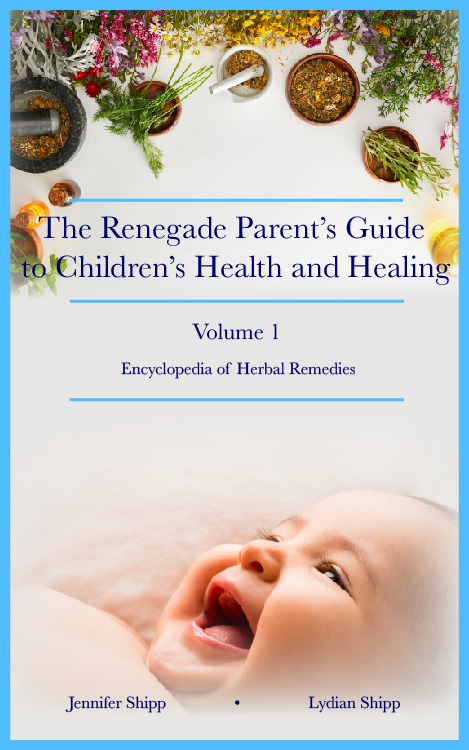
There are few points to consider when looking at whether or not meadowsweet is safe for use in children:
- Meadowsweet has a history of use as an herbal medicine specifically for children’s diarrhea. In fact, it was once regarded as a “specific” for this problem, meaning that it was particularly well-suited to treating diarrhea in children.
- Meadowsweet is an herbal medicine, not a pharmaceutical. While Filipendula ulmaria does contain natural salicylic acid, it also contains a wide array of other medicinal compounds that all work together to produce the medicinal actions of this plant. This is an important point to consider because, indeed, certain compounds in herbs can be toxic when administered by themselves without any other balancing forces, but quite safe when given as part of the whole plant in the appropriate, plant-mediated doses.
- As we discussed above, the acetyl group in aspirin potentiates the effects of salicylic acid in the body in addition to allowing this compound to cross the blood-brain barrier and to directly access the liver. Combine this with the idea that aspirin is synthetic and already being administered at much higher doses than the salicylic acid present in meadowsweet, and it makes sense that aspirin is toxic to children (and adults) whereas meadowsweet is not.
- Salicylates are everywhere. In fact, a large number of regular, everyday foods (like blueberries, tomatoes, chili peppers, grapes, and many more) contain high levels of salicylates! Berries are especially high in salicylates, and indeed, many parents know that berries of all kinds are a popular food for toddlers and young children, yet we don’t limit berries just because they have salicylates. Cherries, especially tart cherries, are also particularly high in salicylates and are well-known for their ability to relieve aches and pains in people with gout, arthritis, and related conditions. Meadowsweet isn’t all that much different from these high-salicylate foods; while Filipendula ulmaria is an important herbal medicine, it also has a history of culinary use, just like these other high-salicylate fruits and veggies.
- Finally, it’s important to realize that meadowsweet is hepatoprotective and gastroprotective. While Filipendula ulmaria does contain salicylic acid, it actually treats the same kinds of problems that aspirin/acetylsalicylic acid can cause. Both medicines relieve pain, but aspirin causes liver toxicity and gastric ulcerations, while meadowsweet treats these issues.
As a separate point, I want to consider the political agenda that may be involved with the way that meadowsweet is portrayed to the general public. Pharmaceutical companies don’t want the public to believe that herbs like meadowsweet are a safe option for pain relief, since this would significantly reduce profits not only from pediatric groups but also from adult patients. By telling parents that herbal medicines containing salicylates are just as dangerous as aspirin, the pharmaceutical companies can sell large amounts of Tylenol/acetaminophen and ibuprofen. After all, these are the only “safe” pain relief options for children under the age of 12 (ibuprofen is actually rather dangerous for children and shouldn’t be administered unless absolutely essential, such as in the case of a life-threateningly high fever, but that’s a different discussion beyond the scope of this article).
If parents start to realize that they can give their child a bit of meadowsweet to relieve everything from teething pains to growing pains and headaches… It’s a big loss for Big Pharma.
So, although I don’t have much direct research to back up the idea that meadowsweet is safe for children (and even for infants, especially for infants over 6 months of age in the appropriate dosages), I hope that these points will give readers some confidence about using this herbal medicine to relieve pain naturally for both themselves and the children in their lives.
Some of the specific uses of meadowsweet for children’s health include:
- Teething pains (I’ve personally used a few drops of Filipendula ulmaria tincture, applied directly to the painful gum areas, to relieve teething pains in my daughter from 18 months onward)
- Growing pains
- Headache
- Diarrhea
- Cachexia / Weakness and weight loss caused by chronic illness (administered externally as a bath)
- Joint pain (internal use OR as an external compress)
- Rheumatism (internal use OR as an external compress)
- Muscle sprains/strains (internal use OR as an external compress)
- Muscle aches (internal use OR as an external compress)
- Seborrhea (administer meadowsweet as an infusion, combined with Viola tricolor, 3 times per day; meadowsweet is also a recommended herb for nursing mothers with infants who have seborrhea)
 Support our outside vendors - Click here to buy Hawaii Pharm's Filipendula ulmaria tincture.
Support our outside vendors - Click here to buy Hawaii Pharm's Filipendula ulmaria tincture.
How to Administer Filipendula ulmaria
Meadowsweet is safe enough to be taken over the long-term for both symptom relief as well as to treat the underlying cause of various health problems. Below are dosing recommendations for different forms of meadowsweet (always take the minimum dose of an herb needed in order to effect a positive change):- Tincture - Take 1-5mL up to 4 times daily of 1:2 extract of fresh leaves and flowers in 95% alcohol, or 1:5 extract of dried leaves and flowers in 50% alcohol.
- Liquid Extract - Take up to 3-6mL of 1:2 extract per day.
- Hydrosol - Take 1 tablespoon diluted in a glass of water up to 4 times per day. Hydrosols are a good choice for patients who have trouble “stomaching” anything.
- Infusion - Take 1 cup of infusion up to 4 times daily. The infusion should be prepared with 2.5 - 6 grams of dried herb.
- Capsules - Take 1000-2000mg up to 3 times per day. The traditional capsulized dose is 250-300mg of dried, powdered herb taken up to 5 times per day (the total daily dose therefore is between 250-1500mg). If the product you’re working with contains dry aqueous extract, choose a dose between 169-200mg. A dose of 50mg of dry ethanolic extract is recommended when given in capsules.
To illustrate the overall safety of meadowsweet, readers should note that the LD (lethal dose) of ethanol extract of Filipendula ulmaria is 1500mg/kg of body weight (in rabbits) when administered intraperitoneally, or 75.7mg/kg when administered intravenously. In mice, a 1:20 meadowsweet decoction, administered intraperitoneally in mice, was found to have an LD of 535mg/kg in male rats and of 1050mg/kg in female rats. These are very, very high doses that a human would be unlikely to consume when using this herb medicinally, especially if following the dosing recommendations above.
Children should follow the dosing guidelines below (always do a test with a tiny amount of meadowsweet to test for allergies, and use the smallest dose necessary to achieve the desired results):
- 6 months to 1 year - Give 12% of the adult dosage
- 1-2 years - Give 25% of the adult dosage
- 3-7 years - Give 50% of the adult dosage
- 8-12 years - Give 75% of the adult dosage
- 12+ years - Give up to the full adult dosage (unless your child is particularly small for their age, and then consider giving them 75% of the adult dosage to start)
Meadowsweet Safety and Precautions
Patients with a known sensitivity to salicylates and/or aspirin should use caution with this herb. Meadowsweet should not be used in children who have fevers due to infection, and should also not be given in large doses to anyone of any age since it can provoke nausea and vomiting when taken in excess. Experts usually advise against taking meadowsweet in combination with other salicylate or NSAID drugs (like aspirin or ibuprofen, for example), or with anticoagulant or antiplatelet drugs (like rivaroxaban or clopidogrel) since meadowsweet can potentiate/increase the anticoagulant effects of these drugs.People with asthma should also use caution when working with meadowsweet since this herb can sometimes induce bronchospasms. While you can still use meadowsweet if you have asthma, be fully prepared for this potential side effect before you try taking this herb for the first few times, and always be prepared for bronchospasms if you choose to continue working with meadowsweet over time.
Click here to learn about the Lugol’s iodine therapy cure for asthma.
Pregnant/lactating women should avoid meadowsweet.
Many people are concerned about the safety of meadowsweet in terms of liver health, since it’s widely known that aspirin, the herb’s pharmaceutical derivative, can cause liver damage when used chronically or in high doses. However, meadowsweet is actually hepatoprotective, meaning that it protects the liver rather than harming it like pharmaceutical aspirin. Also unlike aspirin, rather than harming the stomach lining, meadowsweet can actually also protect and heal the stomach lining (while still reducing pain in the same way as aspirin!).
Resources:
